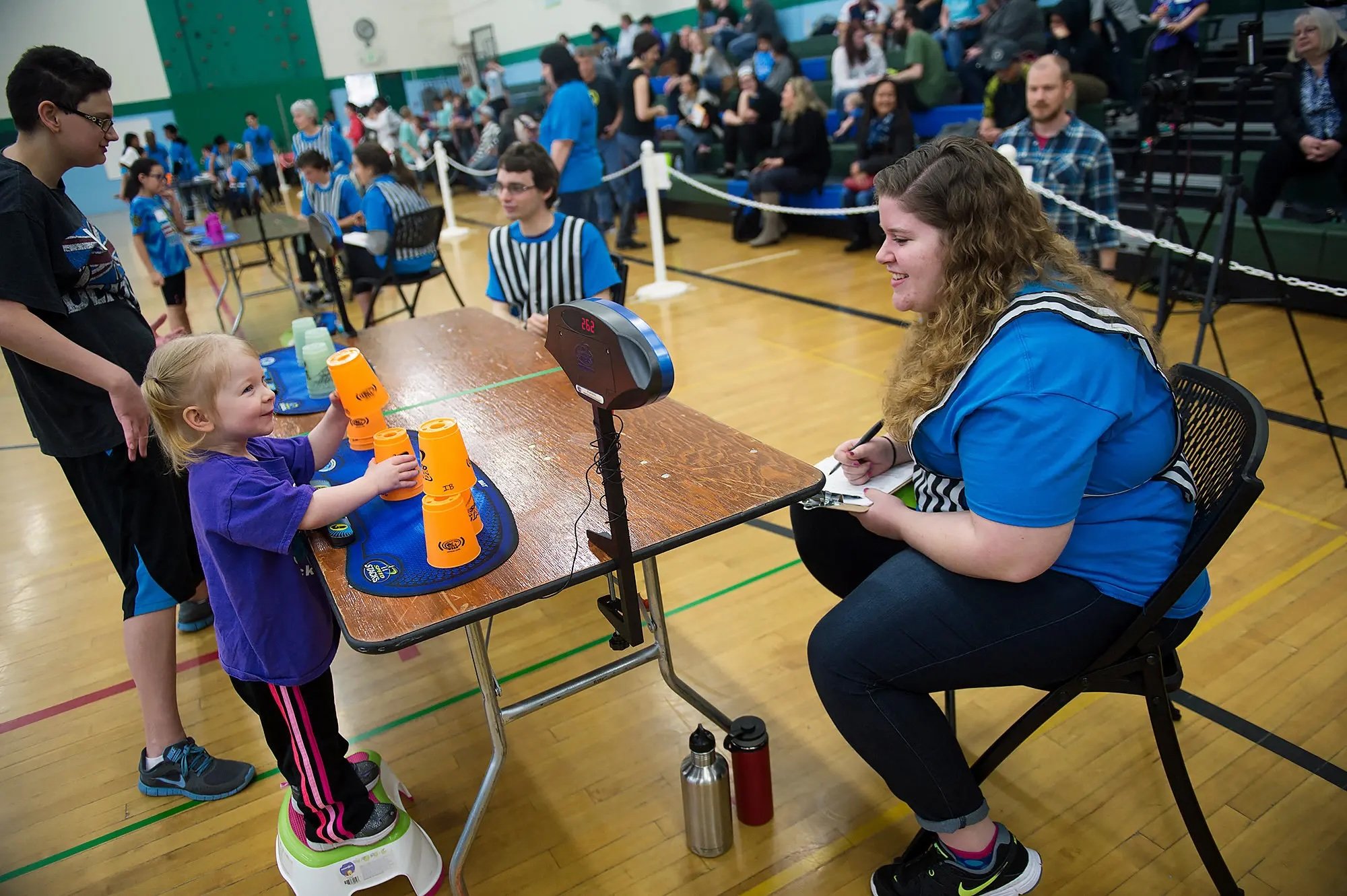Cup-tivating Speed: The Unexpected Art of Sport Stacking
We all know the red Solo cup, the foundation of every gathering imaginable. But what if we told you that there is a sport that involves them (well, kinda)? Over the past few months, cup stacking has gone viral on Instagram and TikTok, and while the public’s opinion has been divisive, we’re here to explain just how impressive it truly is.
What is Sport Stacking?
Sport Stacking (also known as Speed Stacking or Cup Stacking) is a competitive sport that involves the timed stacking of specialized plastic cups into various pyramids. These cups come in a set of twelve and are designed with openings on the top that allow air to pass through. When the cups were first invented, they had three holes on top, but they’ve now been modified to be completely open, which maximizes airflow. Without the holes, the cups would remain suctioned together, which is why you can’t just use red Solo cups to impress your friends at a party. The equipment also comes with a mat to prevent sliding and a timer for recording each run.
Isabelle Burns at a regional cup stacking tournament in Portland, Oregon (Amanda Lucier/New York Times)
How Does It Work?
The main stacking patterns are the 3-3-3, 3-6-3, and the Cycle. This might seem confusing, but it’s pretty straightforward: the numbers represent how many cups are in each stack on the mat. For example, the 3-3-3 involves only nine out of the twelve cups, and they would be arranged in three stacks of three. Competitors must build the pyramids from one side to the other rapidly, then return to their starting point, dismantle them all, and then stop the timer.
The 3-6-3 is similar, except that the middle stack has six cups, making the pyramid slightly taller. Due to the addition of the extra three cups in the center, the entire sequence will take longer to complete.
The last main pattern is the Cycle, which begins with the 3-6-3, followed by two stacks of six, and finally a pyramid of ten with a cup on each side, before downstacking back to the original 3-6-3.
At sport stacking competitions, you will also see doubles events, where two individuals complete a Cycle stack while each using one hand to work together.
Finally, a specialized category that you will also see at a stacking competition is the relay. In this event, four people line up in a single file, each person completing the sequence and then hand-tagging the next teammate. This continues until the final person, who stops the timer once they finish their stack. There are two forms of relays: the individual relay, typically involving the 3-6-3 pattern, and the head-to-head race, where two teams compete side by side using either the 3-6-3 or the Cycle pattern.
What Happens if a Cup Falls?
If a cup falls during a stack, that is called a “fumble”. This happens frequently, as the cups are lightweight, and even the slightest misplacement can disrupt their balance. As long as the stacker rebuilds the pyramid before moving onto the next one, the sequence is still deemed a “clean run.” Sometimes, stackers leave the cup that fell in hopes of finishing the sequence as fast as possible, but this results in a “scratch,” and the run will not count. A run is also considered a “scratch” if a stack of cups falls after the timer is stopped, which can happen due to excessive force on a downstack. Just like any other sport, some referees will verify each run and deem it as clean, a scratch, or in need of a video review.
For example, take a look at this Cycle run by William Allen. You’ll see that the 3-stack on the right fell as he was downstacking it, but he was able to save it with his hand before moving onto the next pyramid. Therefore, this stack was still clean, but slightly slower due to the adjustment he had to make (it's worth noting that his time is still faster than 99% of stackers!).
Benefits of Stacking
Sport stacking is not just a pointless activity, despite what many people think. Similar to solving a Rubik’s Cube, the sport vastly improves hand-eye coordination and ambidextrous development, skills that are transferable to activities such as basketball and tennis. In addition to its physical advantages, sport stacking also offers numerous cognitive benefits, which is one of the reasons why some schools still include it in their physical education programs. Numerous studies have also been conducted that demonstrate a correlation between stacking and test scores in students, as well as the developmental benefits for patients with mild cases of Alzheimer's.
Still skeptical or possibly intrigued? Well, the WSSA 2025 AAU Junior Olympic Games Sport Stacking Championships are taking place this weekend, one of the biggest competitions of the year. You can catch some of the most elite stackers in action, all in one place, on @StackFleet’s YouTube Channel, who will be livestreaming the event. Who knows, you might just discover a new interest!


